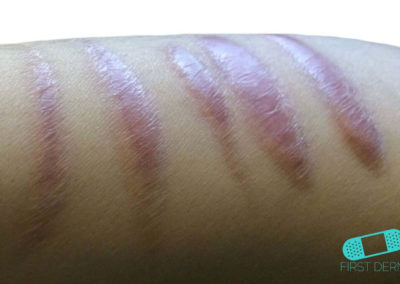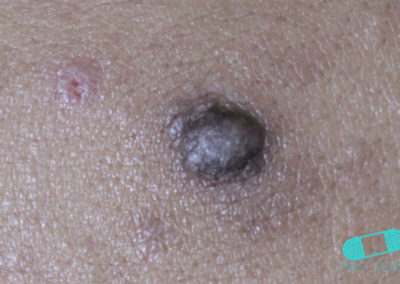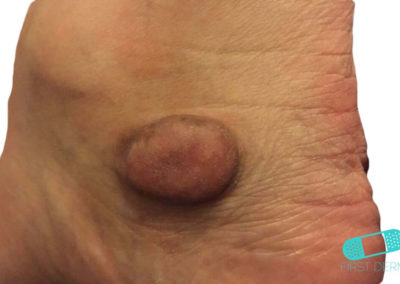Keloid (Hypertrophic Scar)
Medically reviewed by The Dermatologists and written by Dr. Alexander Börve
Very Common
- Requires medical diagnosis
- Symptoms: Rubbery and firm lesion
- Color: Typically flesh-colored, pink or red
- Location: Sites with injuries, mostly on the chest, shoulders, earlobes and cheeks
- Treatment: No treatment necessary; radiotherapy
A keloid is a scar caused by the overgrowth of tissue from skin injuries such as burns, scratches, insect bites, or body piercings. They are harmless, but may cause cosmetic concerns.
When your skin is injured, scar tissue forms over the wound to heal and protect the injury. Keloid happens when the scar tissue grows excessively.
Skin injuries that can contribute to this disease include:
- Acne
- Burns
- Chickenpox
- Ear piercing
- Minor scratches
- Surgical incision sites
- Cuts from trauma
- Vaccination sites
All genders are equally likely to get these scars, but those with darkly pigmented skin are more susceptible. You are also prone to keloid formation if you’re younger than 30 or pregnant. Genes factor into the cause as well. People of African, Asian and Latino heritage tend to get this type of scarring more easily.
Try our FREE dermatology search engine and get peace of mind within a second
Symptoms
Keloids occur mostly on the chest, shoulders, earlobes and cheeks. The condition is localized and does not affect other body parts. This is defined by an elevated, ridged area of the skin. However, the affected area may continue to grow larger over time, taking weeks or months to develop fully.
The scars are rubbery and firm and can be itchy. They can grow much larger than the original wound and are usually flesh-colored, pink or red. You may also experience discomfort, tenderness or possible irritation from friction, such as rubbing on clothing.
If the scarring occurs over nearly your entire body, it may restrict your movements. Sun exposure can discolor the scar tissue and make it appear darker than the surrounding skin.
What can I do?
Keloid susceptibility is genetic, so the scars can be prevented by avoiding body piercings and unnecessary surgeries in patients with known predispositions. Use imiquimod cream to prevent keloids after surgery or skin injuries.
Also, keep the scar from sun exposure to prevent discoloration. You may also cover a developing scar with a patch or Band-Aid.
Try our FREE dermatology search engine and get peace of mind within a second
Should I seek medical care?
No medical attention is necessary usually. You may want to contact your doctor if the growth continues uncontrollably. This can be a sign of skin cancer. The same applies if you develop additional symptoms or if you want to have it surgically removed.
A healthcare provider can diagnose the condition by a visual exam or a biopsy.
Treatment
Radiotherapy is usually the best form of treatment. Other treatment methods include:
- Corticosteroid injections to reduce inflammation
- Moisturizing oils to keep the tissue soft
- Using pressure or silicone gel pads after injury
- Freezing the tissue to kill skin cells (cryotherapy)
- Laser treatments to reduce scar tissue
- Surgical removal
- Radiation to shrink keloids
Try our FREE dermatology search engine and get peace of mind within a second
Source:
U.S. National Library of Medicine. Keloids. Available at: https://www.nlm.nih.gov/medlineplus/ency/article/000849.htm
National Health Service (England). Keloid scars. Available at: https://www.nhs.uk/Livewell/skin/Pages/Keloidscarring.aspx
Ask a Dermatologist
Anonymous, fast and secure!

The Specialist doctor from the University Hospital in Gothenburg, alumnus UC Berkeley. My doctoral dissertation is about Digital Health and I have published 5 scientific articles in teledermatology and artificial intelligence and others.


![Keloid (Hypertrophic Scar) (03) skin [ICD-10 L91.0]](https://www.firstderm.com/wp-content/uploads/Keloid-Hypertrophic-Scar-03-skin-ICD-10-L91.0-400x284.jpg)


